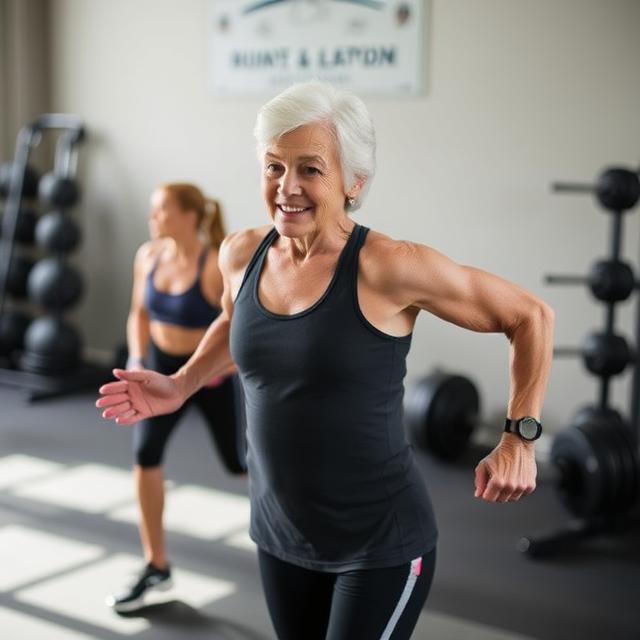Staying fit after 60 is not just about maintaining physical health—it’s about defying expectations, embracing vitality, and living with purpose. Seasoned athletes who continue to train and compete well into their senior years offer valuable insights for anyone looking to remain active as they age. Their stories are not just inspiring—they’re instructional. These individuals have pushed through stereotypes and limitations, proving that it’s possible to be stronger, healthier, and more energized than ever before, even in the later decades of life. Below are five powerful lessons these veteran athletes teach us about aging, fitness, and the true meaning of resilience.
1. Respect Recovery as Much as You Respect the Workout
One of the biggest shifts seasoned athletes make as they age is their perspective on recovery. While younger bodies might bounce back quickly, those over 60 recognize that rest is an essential pillar of progress. Instead of seeing rest days as slacking off, experienced athletes view them as strategic investments. They fine-tune their routines to include active recovery—like swimming, yoga, or brisk walking—to reduce inflammation, improve circulation, and aid muscle repair. Moreover, many prioritize sleep like never before, understanding that it’s during deep sleep that the body rebuilds itself. Recovery doesn’t just prevent injury—it enhances performance. It sharpens mental focus, regulates hormones, and fosters emotional balance. Aging athletes also often incorporate practices like massage therapy, sauna use, or contrast bathing to further support recovery. They listen to their bodies more acutely, catching signs of overtraining before it spirals. Ultimately, this renewed respect for recovery reflects wisdom: it’s not just about how hard you can push, but how intelligently you can pull back. This balance between effort and rest becomes the foundation for sustainable, long-term fitness well beyond your 60s.

2. Strength Training Is Non-Negotiable
Veteran athletes over 60 will tell you: muscle loss is not optional with age—but muscle maintenance is. After 30, the average person begins to lose muscle mass, a condition called sarcopenia. But those who train with resistance can drastically slow—or even reverse—this process. Seasoned athletes incorporate strength training at least two to three times a week, not just for aesthetics or performance, but for independence, metabolism, and joint health. Squats, deadlifts, and presses aren’t off-limits—they’re essential, albeit adapted for safety and form. They use proper warm-ups, mobility work, and sometimes lighter weights with higher volume to stimulate growth without excess strain. Strength training also improves bone density, a critical factor in preventing fractures later in life. Athletes understand that maintaining strength means preserving the ability to lift groceries, climb stairs, or play with grandkids—real-world vitality, not just gym numbers. They also recognize that strength impacts balance, reducing the risk of falls, a leading cause of injury in older adults. For them, strength isn’t about ego—it’s about empowerment. By consistently lifting, even with modifications, these athletes demonstrate that strong isn’t a phase—it’s a lifestyle, no matter your age.

3. Flexibility and Mobility Are Daily Practices, Not Extras
One major shift that becomes apparent in seasoned athletes post-60 is their obsession with staying limber. Flexibility and mobility aren’t treated as afterthoughts—they’re non-negotiables. Every workout is preceded and followed by dedicated mobility work: dynamic warm-ups, foam rolling, targeted stretching, and joint movement exercises. Athletes at this age understand that stiff joints and tight muscles aren’t just annoying—they’re precursors to injury. They prioritize hip openers, shoulder mobility drills, and spinal articulation to maintain functional movement in everyday life. The goal isn’t just to touch their toes—it’s to move freely, pain-free, and powerfully. Many incorporate practices like yoga, Pilates, or tai chi not only for their physical benefits but for the meditative, restorative qualities they bring. These methods improve balance, coordination, and body awareness—skills that naturally decline with age but can be preserved with intention. Veteran athletes also adapt their training sessions to reflect their bodies’ needs on any given day, emphasizing fluidity over rigidity. Flexibility is more than a physical trait—it becomes a mindset. They teach us that true athleticism at any age includes the grace to move through space with ease, adaptability, and confidence.

4. Nutrition Becomes a Precision Tool, Not a Casual Habit
After 60, seasoned athletes no longer eat just for enjoyment or even fuel—they eat for function. Every bite counts, and nutrition becomes a precise, intentional part of their fitness strategy. They often consume high-quality protein with every meal to support muscle synthesis and prevent atrophy. Nutrient-dense foods—think leafy greens, berries, fatty fish, legumes, and nuts—form the core of their diets, supplying vital vitamins, minerals, and antioxidants. They understand that inflammation is the enemy, and they eat accordingly, cutting back on sugar, processed foods, and anything that disrupts gut health. Hydration is emphasized more than ever, as older adults often have a diminished thirst response. These athletes also time their meals to optimize energy and recovery, often using post-workout nutrition strategically to replenish glycogen and repair muscle tissue. Many also work with nutritionists or rely on careful self-experimentation to find what works best for their unique physiology. Supplements like omega-3s, vitamin D, magnesium, and collagen often become staples. But the real lesson is this: seasoned athletes treat food not as a comfort blanket, but as a high-performance tool. It fuels longevity, sharpens the mind, supports immunity, and keeps the engine running clean and efficient well into their 60s, 70s, and beyond.

5. Mental Discipline Outweighs Motivation
If there’s one truth every seasoned athlete swears by, it’s this: motivation fades, but discipline doesn’t. After 60, the novelty of working out is long gone, replaced by habits honed over decades. These athletes don’t rely on feeling “in the mood” to train—they show up because it’s who they are. Life throws more curveballs at this age—injuries, family obligations, medical scares—but discipline is what keeps them consistent. They’ve built mental routines just as strong as their physical ones. Whether it’s journaling, meditation, visualization, or simply lacing up their shoes without debate, they’ve mastered the art of showing up. Setbacks aren’t viewed as failures—they’re reframed as detours. Mental resilience, built through years of overcoming, becomes their secret weapon. They also understand the importance of purpose—training isn’t just about vanity or competition; it’s about staying sharp, independent, and connected to something bigger. They find joy in the process, pride in the effort, and identity in the practice. This mental toughness seeps into every area of life—relationships, careers, passions. They’ve learned that the mind leads and the body follows. And while others might slow down with age, disciplined athletes prove that aging is not a decline—it’s an evolution of strength, both inside and out.

The collective wisdom of these seasoned athletes serves as a blueprint for vibrant aging. They don’t chase youth—they redefine it. Through a balanced approach that emphasizes recovery, strength, mobility, nutrition, and mental resilience, they show us that being over 60 doesn’t mean slowing down. It means leveling up with purpose. These lessons aren’t exclusive to elite competitors—they’re available to anyone willing to approach aging not with fear, but with intention. The real message is simple but powerful: don’t let the number define you. Let your actions speak louder than your age.


